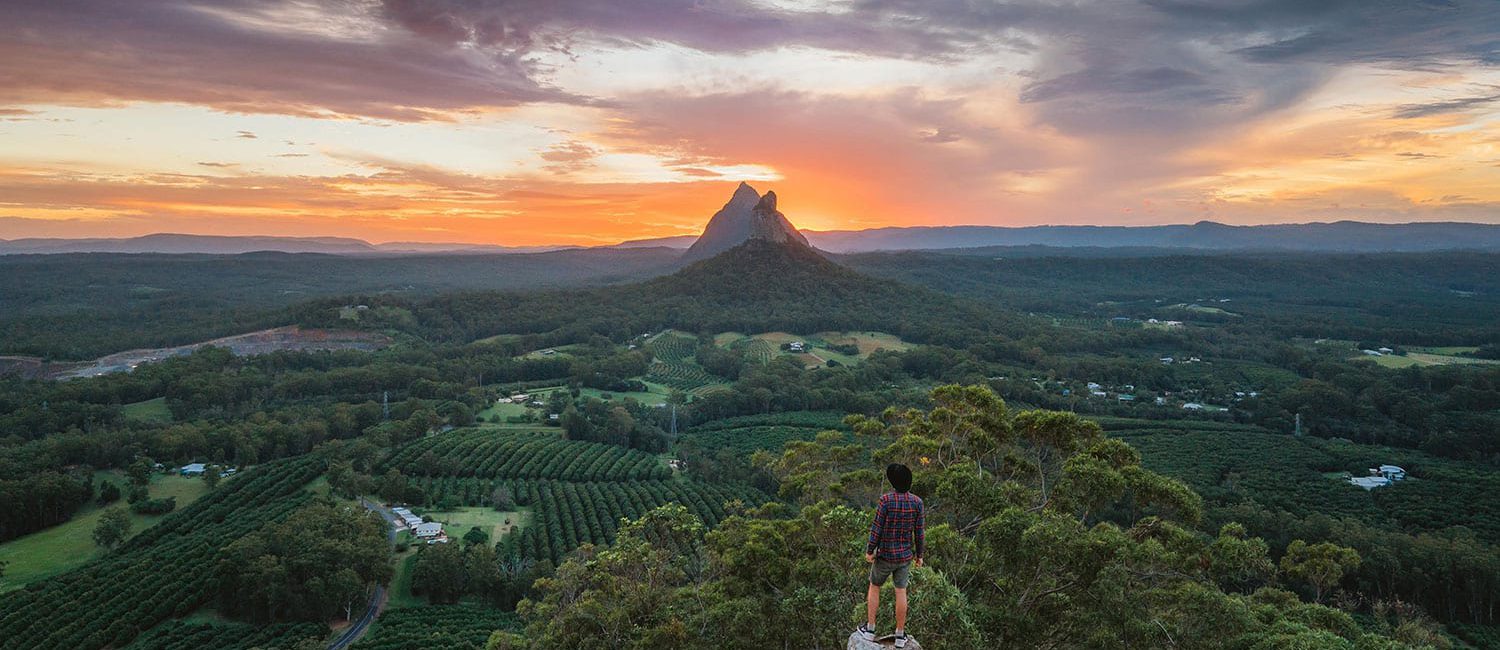
Glass House Mountains
Glass House Mountains
The township of Glass House Mountains, sits amidst the majestic popular tourist destination, the Glass House Mountains, located in the traditional lands of the Aboriginal Gubbi Gubbi people. Named by explorer Captain Cook in 1770, on his epic voyage north on his ship The Endeavour, the Glass House Mountains are said to have reminded him of glass furnace houses back home in Yorkshire. The Glass House Mountains consist of eleven mountains known in Aboriginal language as ‘daki comon’ meaning ‘stone standing up’.
Glasshouse Country – “Come for a Day – Come for a Stay”
The Celebrate Glasshouse Country group continue to show initiative and a genuine desire to make our region a real marketable identity, attractive for others to visit and a better place for all of us all to live in. There is so much to do in the ‘Glasshouse Country’ that we are encouraging visitors to plan to stay and have a really good look around.
The geology of the Glass House Mountains
The question is often put, “are the Glass House Mountains the remnants of old volcanoes?” the short answer is NO, as they are Magma Intrusions that were formed and matured underground some 25 million years ago – Sunshine Coast Hinterland, Queensland, Australia.
History
The Glass House Mountains were named by Lieutenant James Cook in 1770, during his voyage along Australia’s east coast. In 1890, the Caboolture to Landsborough section of the North Coast Railway Line was constructed to the east of the Glass House Mountains. The Coonowrin Station was established along the line, named after Mt Coonowrin, one of the so-called Glass House Mountains. Its name was changed to Glass Mountain Station in early 1891, the same year Crown land was offered for sale in the vicinity. The railway station name was changed to Glass House Mountains in 1914. The railway station was built in 1890. It has undergone alterations over time, but the overall form of the structure, in particular the distinct mono-pitched roof and separate awning, have remained intact. Indeed, it is the only railway station building of its type that remains extant in the Sunshine Coast and a variation of a design once common in rural railway stations constructed in the nineteenth century.
A small settlement grew around the station, with a provisional school built in 1906 and a School of Arts hall in 1916. Pineapple farming has been the main agricultural crop for the district, although bananas, tobacco and sugar cane have also been grown. Orchards were also established on many of the post-World War I soldier settlement farms that were located between the Glass House Mountains and Beerburrum.
Visitors have always been fascinated with the mountains, and tourism is now an important industry for the village. Visitation, easy commuter access to rail transport, and housing affordability have seen the population of Glass House Mountains expand over the last decade.
History Source - 'Thematic History of the Sunshine Coast', Sunshine Coast Heritage Study, Sunshine Coast Council, August 2019



